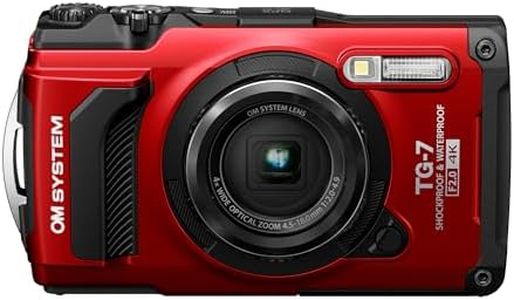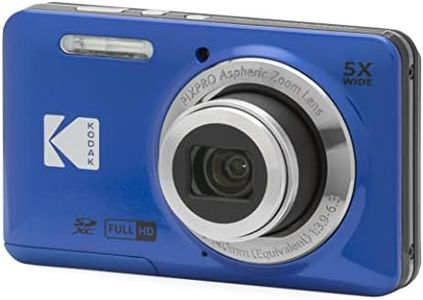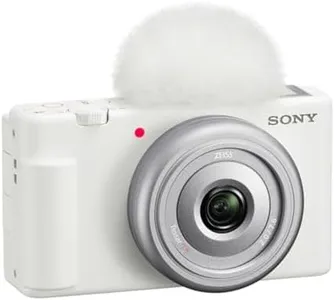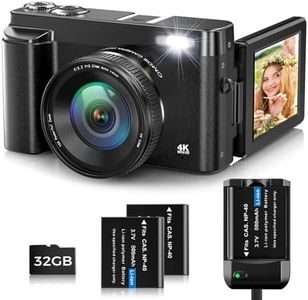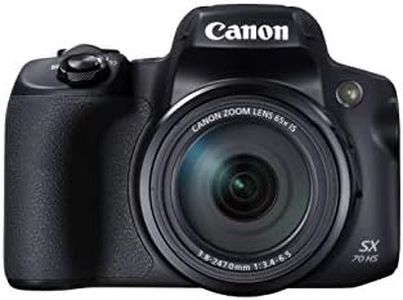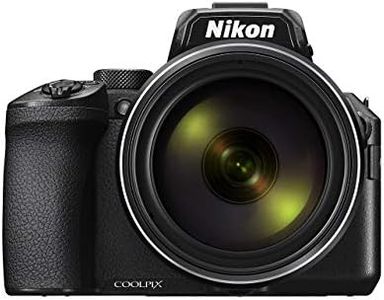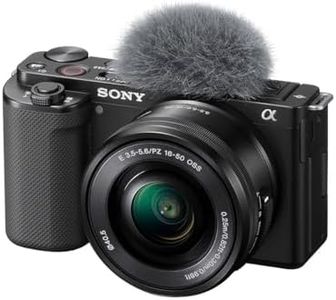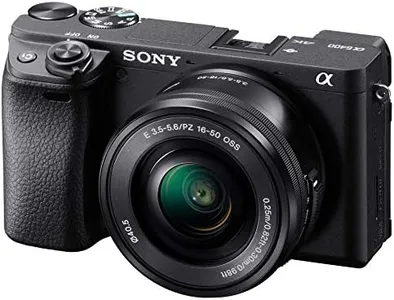We Use CookiesWe use cookies to enhance the security, performance,
functionality and for analytical and promotional activities. By continuing to browse this site you
are agreeing to our privacy policy
10 Best Compact Zoom Cameras
From leading brands and best sellers available on the web.By clicking on a link to a third party's website, log data is shared with that third party.
Buying Guide for the Best Compact Zoom Cameras
When choosing a compact zoom camera, it's important to focus on your specific needs, like what you'll photograph most often (travel, family events, nature, etc.), how portable you want the camera to be, and what kind of user experience you're aiming for. Compact zoom cameras are popular because they offer more flexibility than phones yet are easy to carry. Evaluating a few key specs will help you find a model that feels right in your hands and meets your expectations for picture quality and ease of use.Zoom RangeThe zoom range (often described as 'optical zoom') tells you how much closer you can get to a subject without physically moving. It's usually expressed as a factor like 10x, 20x, or 40x. Lower ranges (up to 10x) are good for everyday snapshots and indoor settings, while higher ranges (20x to 40x and beyond) are helpful if you like shooting distant scenes, such as wildlife or sports. However, cameras with very high zoom can be larger and harder to hold steady. Choose a zoom range that matches what and where you’ll be shooting most often.
Sensor SizeSensor size impacts image quality, especially in low light. Compact zoom cameras tend to use small sensors (like 1/2.3" or 1" types). Larger sensors generally deliver better image quality, especially when you zoom in or shoot in dim conditions. If you mainly photograph outdoors in good light, a smaller sensor may not be a problem. If you want greater clarity and better performance in darker settings, consider a camera with a larger sensor.
Size and WeightCompact zoom cameras come in different sizes and weights. Some fit easily in a jeans pocket, while others are chunkier due to big zoom lenses. Smaller, lighter cameras are easier to carry everywhere, making them great for travel and casual outings. Larger models may offer more features and better ergonomics but can be less convenient. Think about how comfortable you want to be with the camera in your bag or hand all day, and pick accordingly.
Autofocus Speed and AccuracyAutofocus determines how quickly and reliably the camera can lock onto a subject. Fast and accurate autofocus is useful for action, sports, or catching fleeting family moments, while slower autofocus can be limiting. Some cameras focus quickly even in low light, while others may struggle. Consider how important fast focus is for your subjects and if you plan to shoot things that move.
Image StabilizationImage stabilization (IS) helps reduce blur from shaky hands, especially important when using a long zoom. Good stabilization systems make it easier to get sharp photos in low light or at maximum zoom. If you want to shoot handheld most of the time or don’t want to worry about blur, look for a camera with reliable image stabilization.
Manual Controls and Shooting ModesSome compact zoom cameras offer manual controls for settings like exposure, focus, and white balance, while others are mainly point-and-shoot. If you want to learn more about photography or experiment creatively, manual options can be valuable. If you prefer simplicity and ease, cameras with strong automatic modes will suit you best.
Screen and ViewfinderMost compact zoom cameras have an LCD screen for composing shots and reviewing photos. Some also have a viewfinder, which can be helpful in bright sunlight or for steady handheld shooting. Screens vary in size, brightness, and whether they tilt or flip. Screens that tilt can help with difficult angles or selfies. Choose based on where you’ll shoot and how you like to compose your images.
Battery LifeBattery life affects how long you can shoot before needing to recharge. If you’ll be out all day or travel frequently, a longer battery life means fewer interruptions. Think about your typical shooting sessions and whether carrying a spare battery is convenient for you.
ConnectivityConnectivity options like Wi-Fi or Bluetooth make it easier to transfer photos to your phone or share them online. If you like quick sharing or remote control of your camera via an app, consider a model with these features.


